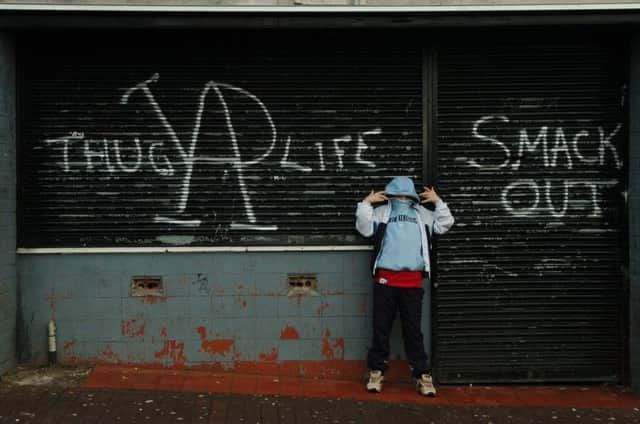12-year-olds turning violent in Glasgow’s gangs


The British Sociological Association’s annual conference will today hear how children living in the city’s housing schemes can be involved in “street culture” from the age of four, being drawn into violence and protecting their territory from around the age of 12.
Johanne Miller, of the University of West Scotland, carried out research with 60 members of 21 of the estimated 170 gangs in the city.
Advertisement
Hide AdAdvertisement
Hide AdShe said children were drawn into violence against rivals when protecting what they considered to be their territory.
According to her research, the gangs are not hierarchical, organised criminal groups but friends that have grown up in the same area.
“These children have grown up hearing stories of territorial rivals and the crimes they enact,” she said. “So within the child’s consciousness there is a known enemy, an ‘other’ out there who is already a threat in their minds. There is a tradition of associating your scheme as something that needs to be protected.
“They would begin absorbing street culture transmitted through story-telling and observations of older children in the area and family members. They would adopt the gang name, start using it and decide whether they wanted to fight or not. This is how they grew into the gang. This violence then becomes more serious for core members, and conflict becomes a central binding agent of the gang.”
The research found that teenagers between the ages of 14 and 18 spent four to six hours a day on the streets, and even longer at weekends.
Ms Miller said: “They fight on roads, abandoned bridges, at canals, and rivers, anywhere that is a boundary marker and away from CCTV or regular police patrols.
“I was told stories about broken arms, a broken back from falling from a cliff, nails through feet, being hit with cars, someone being set on fire, suicides, shootings, stabbings, a boy’s brother buzzing gas and it blowing up, killing him.
“People being hurt and dying was an accepted part of their lives, it was just another inevitable part of occupying the streets for the young people.”
Advertisement
Hide AdAdvertisement
Hide AdHowever, the research found time spent in a gang was usually limited, with many “drifting away” after three years or so.
Ms Miller said every young person who had taken part in the study had spoken about finding a job, although 72 per cent of them had not worked in the past year.
A Scottish Government spokeswoman said: “There are relatively low numbers of young people involved in gangs in Scotland. Our approach to divert young people from offending is based on prevention, early intervention and providing appropriate support. Our early intervention initiative – the whole system approach – tackles all aspects of youth offending from low-level crime to the most serious and harmful offences and aims to stop young people following the wrong path.”
FOLLOW US
SCOTSMAN TABLET AND MOBILE APPS